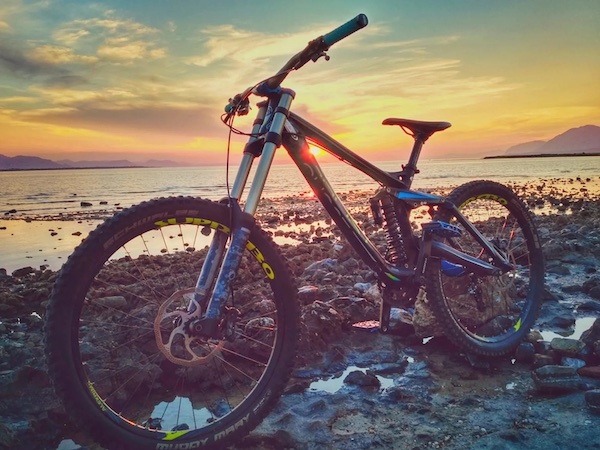Categories
New Blog
Tags
Cycling is becoming a popular thing as it is more friendly to the environment, and a great way to exercise. For city commutes, it helps save on time and money. If you hate to sit in traffic, you can conveniently bike to work. Technological advancements have made biking more efficient, comfortable and affordable. It is the perfect time to own a bike.
When buying a new bike, one of the most important decisions you’ll have to make is whether you want to go with a more road oriented bike or an off-road oriented bike. Pretty much all bikes fall into one of these two categories.
This best bike for you depends on a number of factors including the type of terrain you ride, the distances you plan to ride, who you plan to ride with, personal preference, and more. These days, choosing a bike is more difficult than ever simply because there are so many options to choose from. Over the past decade, a number of new cycling niches have evolved. You’re no longer limited to strictly road or mountain bikes. Bikes have also become more efficient, affordable, and reliable. This guide we will help you establish whether you should get a mountain bike or a road bike depending on your needs.
What is a Road Bike?

Road bikes are designed to be ridden on paved surfaces. They feature a lightweight and aerodynamic design. Road bikes are optimized for speed and efficiency rather than comfort and durability but it has a premium placed on high stiffness, low weight, and vertical compliance. It mainly has traditional features like round tubes and a few up-to-date performance oriented features like aerodynamic tube shaping for cutting through the wind easily and a seatpost, bar, and stem for weight, stiffness, and aesthetics. Most road bikes also feature disc brakes, which was a rare design feature in the past.
There are different styles of road bikes from the different geometry design on frames : ultralight, endurance, all-road and aero. Road bikes are sometimes called racing bikes.
Aero Road Bike
These have a wing-shaped frame, tubes, and wheels. They are meant for racing and time trialing. Their design prioritizes speed over rider’s comfort as they are built with aggressive rider positions. On the bright side, aero bikes reduce drag to the bare minimum.
Endurance Road Bike
These are a top favorite for most riders. They are built for speed and premium comfort. They have a more upright rider position, wider gearing ranges and tires, and vibration-absorbing technologies in their frame.
Ultralight Road Bike
These are made with the lightest materials to reduce weight. They are meant for long climbs. Since they are remarkably lightweight, they can be used for other riding styles.
All road Road Bike
These aren’t very old in the market. They are a new style inspired by the idea of gravel bike and pure road bikes. They are also commonly known as road-plus or pavement-plus because they combine the geometry of a more tradition bike with the clearance of moderately bigger tires.
Touring Road Bike
These are lightweight roadsters designed for ultra-comfort and large carrying capacity. They feature long wheelbases and stable steering for confident handling. You can place a rack on the accessory mounts for carrying your gear for long-distance rides.
A road bike is the best option you can get if you are staying on pavement. Its high efficiency makes it perfect for racing and a wide range of recreational rides. According to
experts, since road-bikes are not well-suited for off-the-road use, their dropped sitting position can be a tad hard to maintain comfortably when riding long distances.
Distinctive features
With advancement in technology, road bikes are designed with a couple of distinctive features that make them more comfortable and efficient. They include:
Disc brakes
Disc brakes are the latest trend in the road-bike industry. They not only make braking safe and reliable, but also give an allowance for increasing tire clearance. In fact, most race-oriented bikes launch as disc-brake-only platforms nowadays. Endurance-style road bikes without disc brakes are increasingly becoming a rarity.
The benefits of disc brakes include; better performance in adverse conditions, and less brake heat-induced tire, tube and rim issues.
Wider clearance
The introduction of disc brakes has allowed manufacturers to increase tire clearance. Disc-brake road bikes are now able to fit tires that measure up to 35mm in width from the traditional 28mm. Wider tires offer better rolling efficiency, traction, and increased comfort. They are also much safer as they allow the rider to roll into pot holes and over gravel patches instead of darting around them like smaller tires would.
Frame materials
Road bikes carbon fiber frames which is remarkably robust, stiff, lightweight, and tunable. There are also bikes made of materials with intrinsic qualities like bamboo, titanium, hardwood, magnesium, steel and titanium. Any of the materials can be weak or strong, and can ride well or harshly. Carbon fiber stands out from the rest of the materials because it is tunable. It allows engineers to micro-tune the frame of the bike with specific attributes.
What is a Mountain Bike?

Mountain bikes are rugged and durable bikes that are designed for off-road cycling. They can be ridden on single-track trails, mountain bike trails, fire roads, gravel roads, pothole-filled city streets, and pretty much any type of paved or unpaved surface. Depending on the design, a mountain bike can handle terrain consisting of loose dirt, gravel, roots, rocks, logs, steep grades, sand, snow, grass, wet surfaces, jumps, drops, wall-rides, and more.
Basically, mountain bikes are rugged machines with flat handlebars and very wide knobby tires that can tread narrow dirt trails.
Mountain bikes feature flat handlebars for control, hydraulic disc-brakes for handling steep ascents and descents, and exceptionally wide tires of 2 inches or more. The tires have knobby tread for traction.
The wheels of an MTB can either be 27.5 inches or 29 inches. The traditional 26 inches is rare nowadays. Just like regular street or commuter road bikes, there are women-specific mountain bike models which have features tailored to the anatomy of a woman, like smaller hand grips, narrower handlebars, and shorter crankarms. Most of them also have lighter suspension tuning for smaller riders.
Mountain bikes come in different styles from the different geometry design on frames including: full-suspension trail, full-suspension cross-country, full-suspension endure, and hardtail.
Trail full-suspension
These offer a mid-travel suspension of about 120 to 150mm designed to balances descending abilities and climbing efficiency. They feature large tires and brake rotors for great stopping power. Some models offer the conventional 29-inch wide wheels while others offer the plus-size rubber. Trail bikes are the most popular mountain bikes because they can handle almost everything, from casual cross-country trails to rowdy downhills.
Hardtail Mountain bike
These live up to their name with their suspension forks on a rigid frame. They are the most affordable style of mountain bikes, though there are high-end versions meant for racing.
XC full-suspension Mountain bike
These feature a shorter-travel rear suspension of about 110mm or less. They are designed to prioritize low bike weight and efficiency under power, especially on ascents. The bikes are mainly designed for racing on cross country and marathon courses that need sharp handling and efficient suspension. They feature head-tube angles near 70 degrees and 29-inch wheels.
Enduro Mountain bike
These bikes offer up to 160mm or more of wheel travel. They are designed for maximum control during descents on steep technical terrains. They have aggressive tire treads and powerful brakes. You can also use them at bike parks or anytime you are going really fast. They feature head angles ranging from 62 to 66 degrees. Their reaches are also longer to keep the rider’s weight farther behind the front-wheel.
Downhill Mountain bike
These are designed for downhill races. They can also be used in bike parks. They feature ultra-long wheel bases, long-travel suspension of about 200 mm or more and dual crown forks that require slow handling to help the bike rip downhill in a straight line. They hit massive jumps better than any other bikes.
According to most reviews, the Vilano blackjack 3.0 is one of the best mountain bikes worth investing in. it is a top preference for many riders because of its front and rear disc brakes provide plenty of stopping power in all conditions. Its 80mm suspension fork and lightweight construction makes it easier to cruise over obstacles.
Mountain bikes are highly versatile. You can use a mountain bike for different cycling styles depending on the type you get. They offer a cushy ride and an upright riding position on a wide variety of surfaces. If you intend to use a mountain bike for a technical trail, consider getting one with a greater rear suspension.
Distinctive features
Longer front center and wheelbase– ‘Longer’ is the new norm for mountain bikes. Manufacturers are making reaches much longer and the head tube angles are more slackened. The increased length helps in centering the rider between the wheels better. It also makes the bike feel smoother, stable and more secure in steep terrain.
Steeper seat tubes– This is one of the most recent mountain bike innovations. Some models comes with seat tubes as steep as 76 degrees. This allows riders to be in a more favorable seated position for climbing. The steep seat tubes have also allowed manufacturers to decrease chain stay length, fit bigger wheels and tires into the frames as well as increase travel.
MTB vs road bike:
|
|
ROAD BIKES |
Mountain bike |
|
Advantages |
|
|
|
Disdvantages |
|
|
Xiamen Tour de Cycling is committed to providing high quality, low weight , high strength and high performance,high end road bike disc carbon frames, we can provide as well as full suspension endure MTB carbon frames,light weight hardtail MTB carbon frames. Please contact us to start your OEM project.